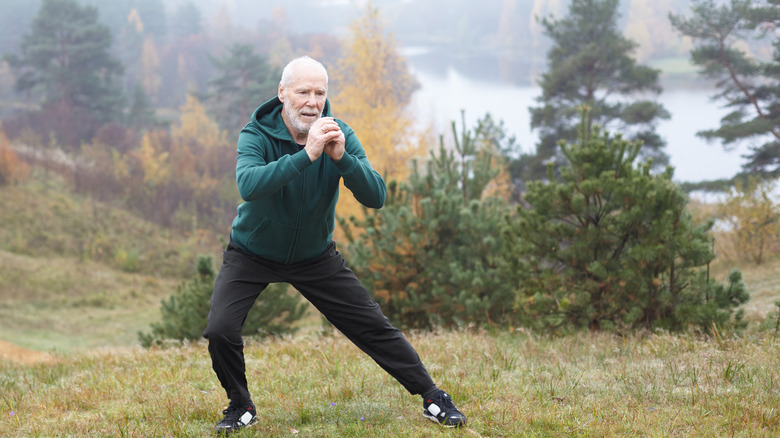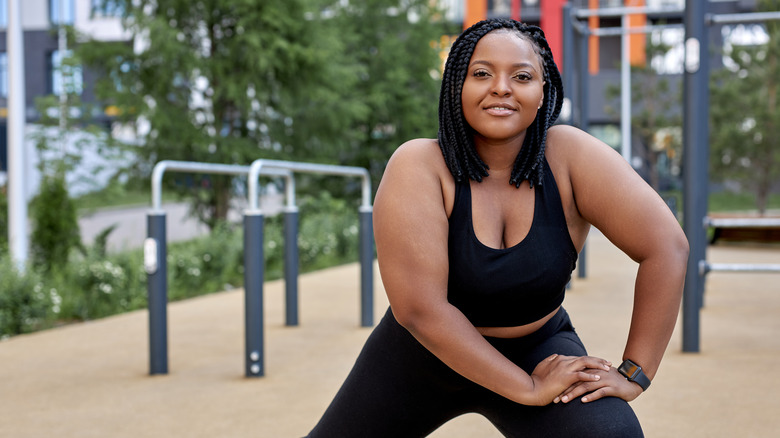This Is What Side Lunges Can Do For Your Body
Variety of the spice of life. It's true about the things you experience, the food you eat, and the media you consume. And it's also true, surprisingly enough, of your fitness routine. As SHAPE points out, many core workout moves follow a single plane, meaning we only move back and forth. This plane of movement is known as the sagittal plane and includes activities like biking, walking, running, squats, and forward lunges.
These are all healthy skills to have and they're great methods of exercise. But they neglect the other two planes of movement, described by Overland Park CrossFit as lateral (side to side movement) and transverse (rotational movement). The CrossFit gym's blog goes on to say that, without training in these planes of movement, people are more likely to injure themselves when they have to move in those directions. Such situations can include twisting during a basketball game, shifting your direction while moving furniture, and even dancing.
It makes sense to incorporate multiplane movement into your workout. Of course that may seem more easily said than done, but there is one simple move that can get you started. And that move is the side lunge.
Strength and stability
The side lunge — also known as the lateral lunge — is a great way to train your lateral movement. And as BarBend explains, that is not the only benefit you get when you add side lunges to your workout routine. The movement also increases strength in the glutes and lower legs. This is because the movement uses the gluteal muscles, the hamstrings, the quadriceps (the muscle group up the upper thigh), and the abductor magnus (the inner thigh).
These are major benefits that not only increase your strength but can also protect you from injury as your body adapts to the increased range of motion. They hinge, however, on properly performing the side lunge. SHAPE suggests starting with your feet together, then taking a large step out to the right. As you step out, drop into a lunge with your hips and butt going back while your right knee bends so it stays over your right toes. Keep your left leg unbent and let it follow the sideways motion of your hips. To finish, push off from your right foot and return to center. You can either alternate sides or do several reps on one side before switching to the other.
It may take a while to become as strong in your side lunges as you are in your front lunges. But that is exactly why they are important.


